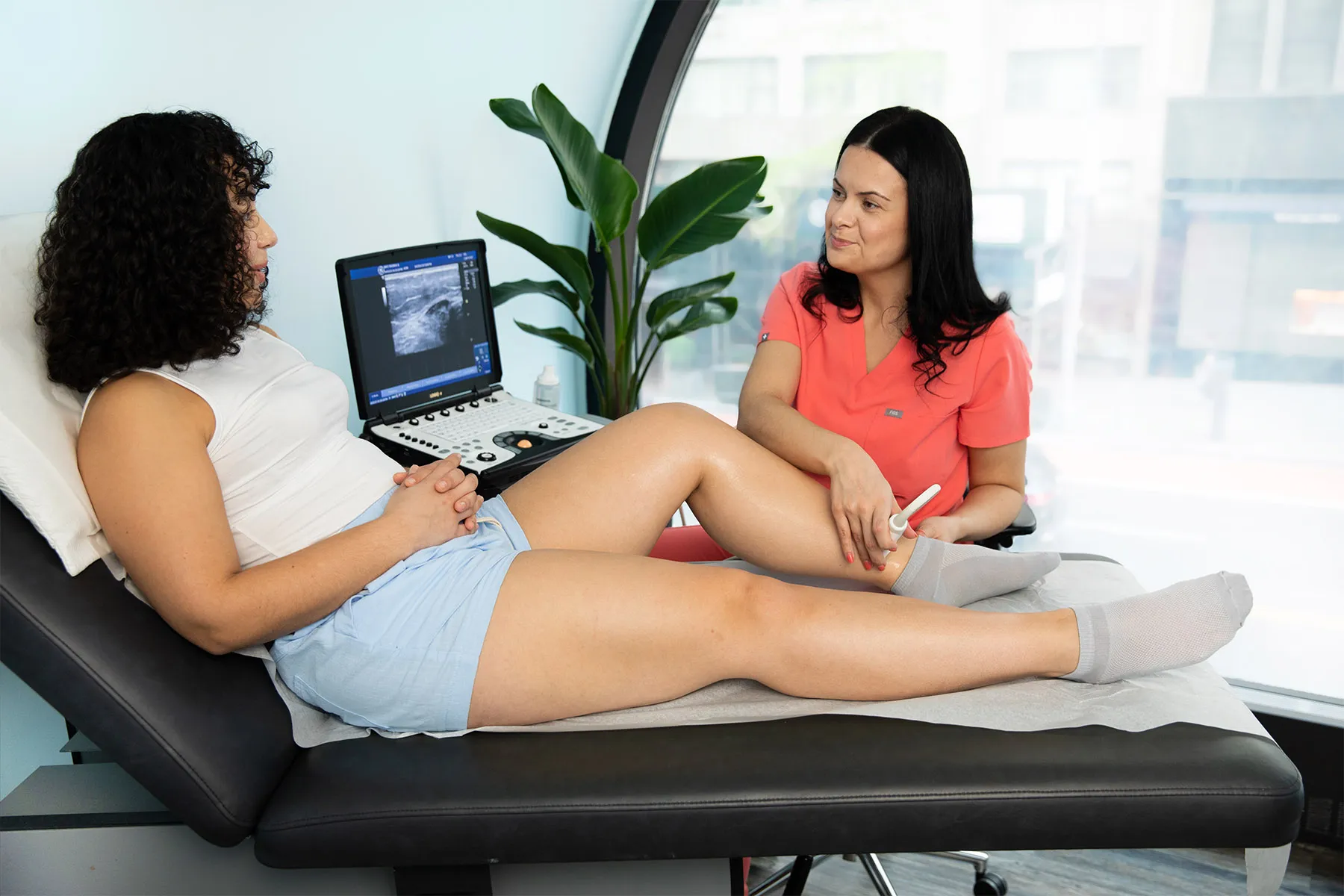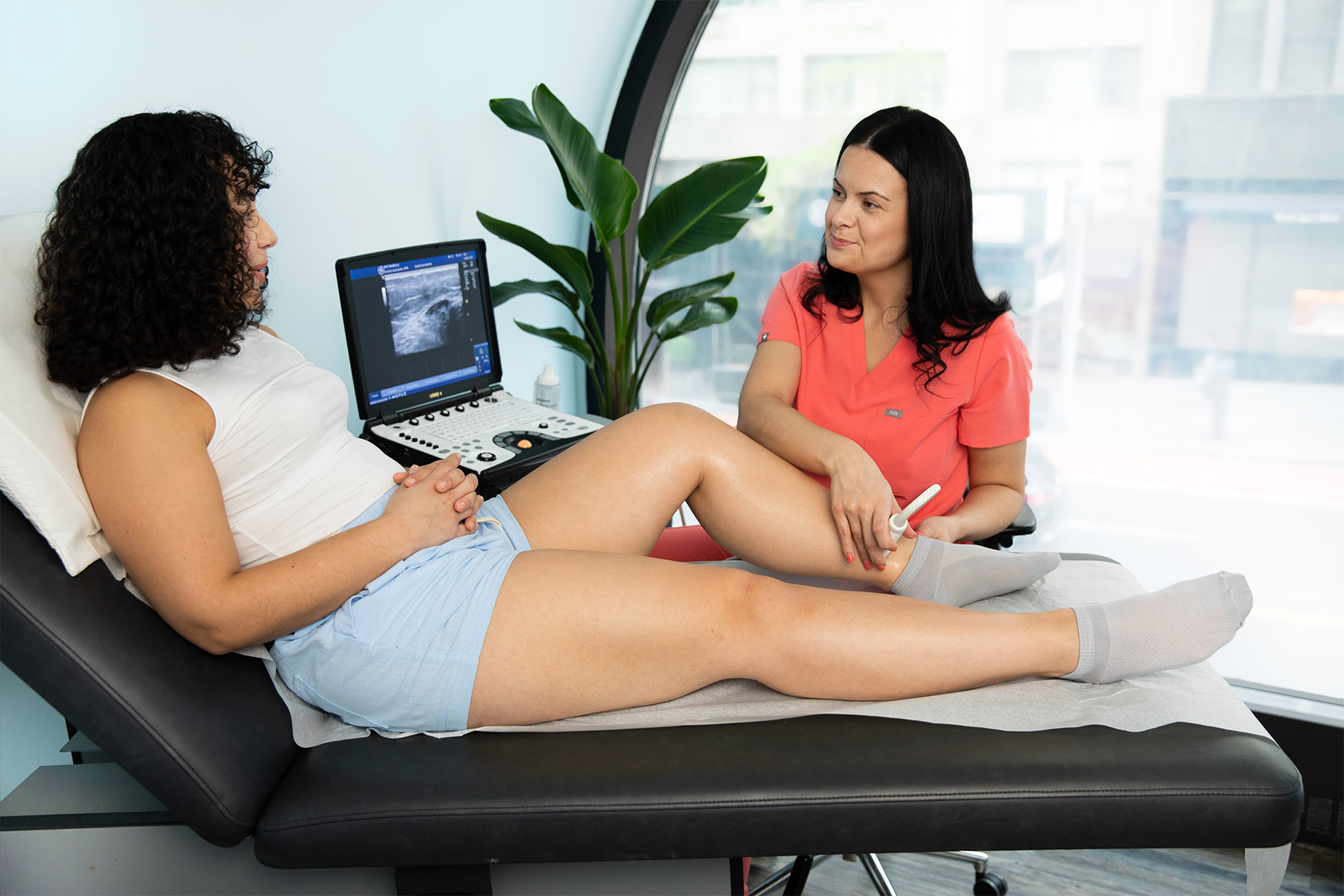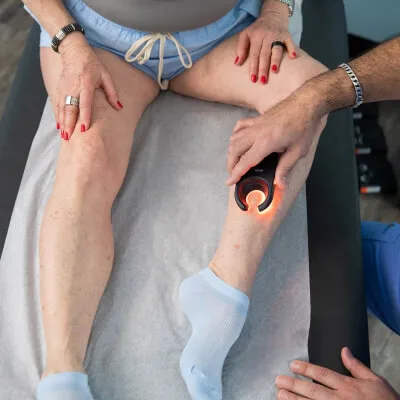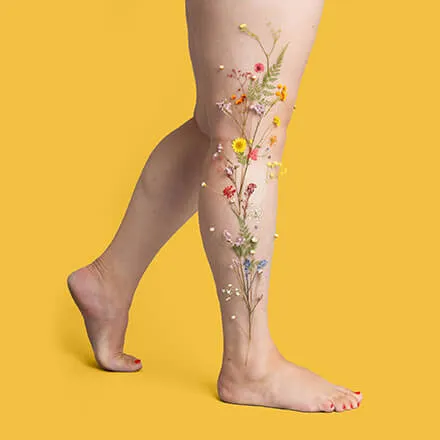Key Takeaway
Your health insurance deductible is the amount you pay for your medical care before your insurance plan begins to pay for a percentage of your covered expenses. For medically necessary vein treatments, meeting your deductible can significantly lower your out-of-pocket expenses, often meaning your procedure is covered at little to no cost to you.
What Does Your Insurance Deductible Mean for Vein Treatment?
Your deductible is the amount you pay before your insurance starts covering vein treatments. Once you meet your deductible, many medically necessary vein procedures can be covered at little or no cost.
Understanding your deductible is an important part of planning for the cost of vein treatment. Since vein disease is a medical condition, the majority of treatments for varicose veins are considered medically necessary and are covered by many health insurance plans. This guide will walk you through insurance deductibles, when to schedule your care, and how to maximize your health insurance coverage to get the treatment you need.
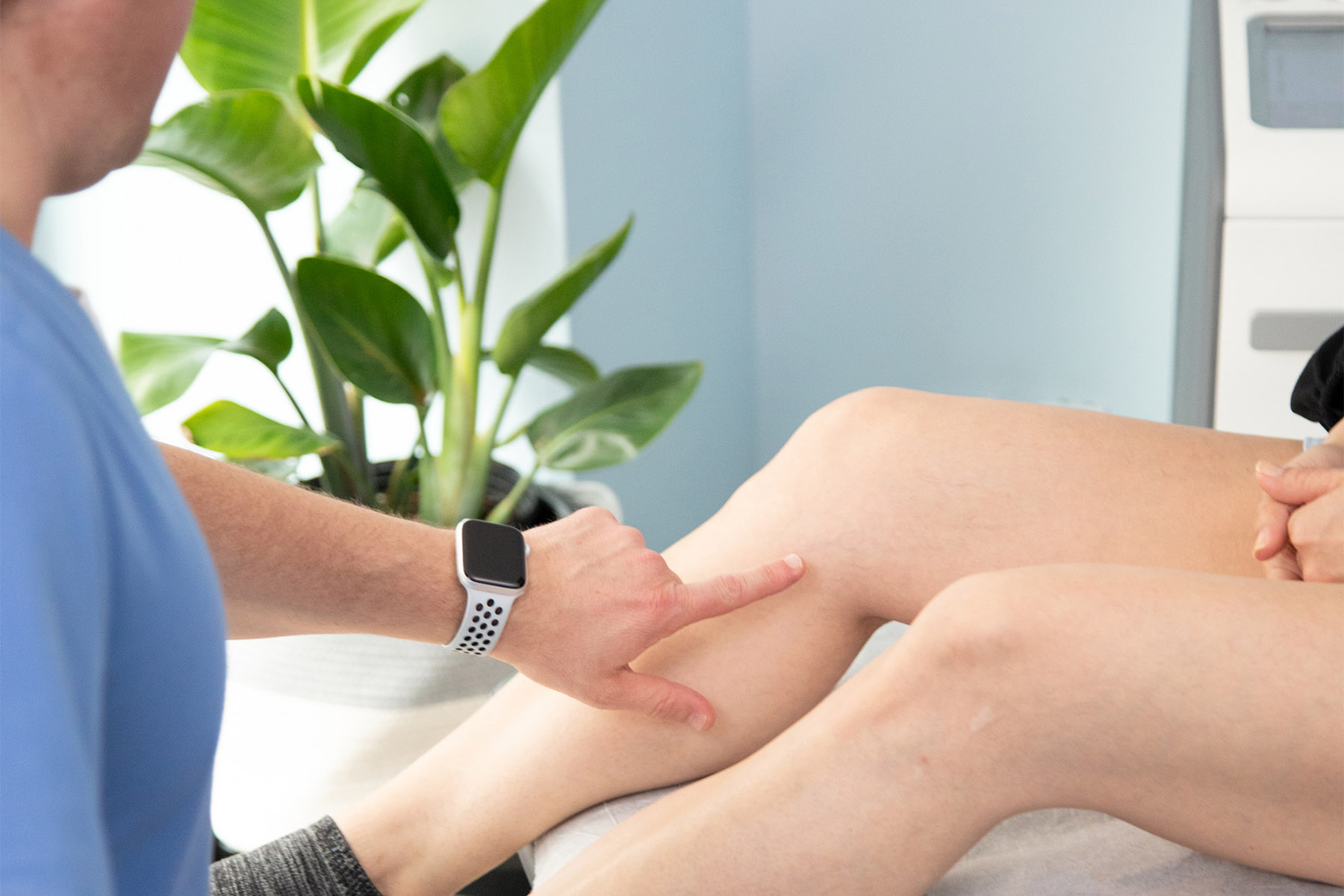
Understanding Insurance Basics
Let's dive into some of the basics of insurance terms and definitions.
What is an Insurance Deductible?
An insurance deductible is the set amount of money you must pay for covered medical services and prescription medication before your insurance company begins to pay.
For example, if your deductible is $1,500, you must spend that amount on eligible healthcare costs before your insurance begins to cover the cost of additional medical treatment and care.
What's the Difference Between a Deductible, Copay, and Coinsurance?
These are three common terms that represent how you share the cost of care with your insurance provider.
1. Copay
A copay (or copayment) is a fixed amount you pay for a doctor's visit or service, such as $30 for a primary care visit. It is determined by your insurance provider and plan and may or may not count toward your deductible.
2. Coinsurance
Coinsurance is the percentage of the cost you pay for a service after you've met your deductible. For instance, if your coinsurance is 20%, you pay 20% of the cost, and your insurance pays the remaining 80%.
3. Out-of-Pocket Maximum
Your out-of-pocket maximum is the yearly cap on what you must pay out-of-pocket for covered services. Once you hit this limit, your insurance plan typically covers 100% of your costs for the rest of the year.
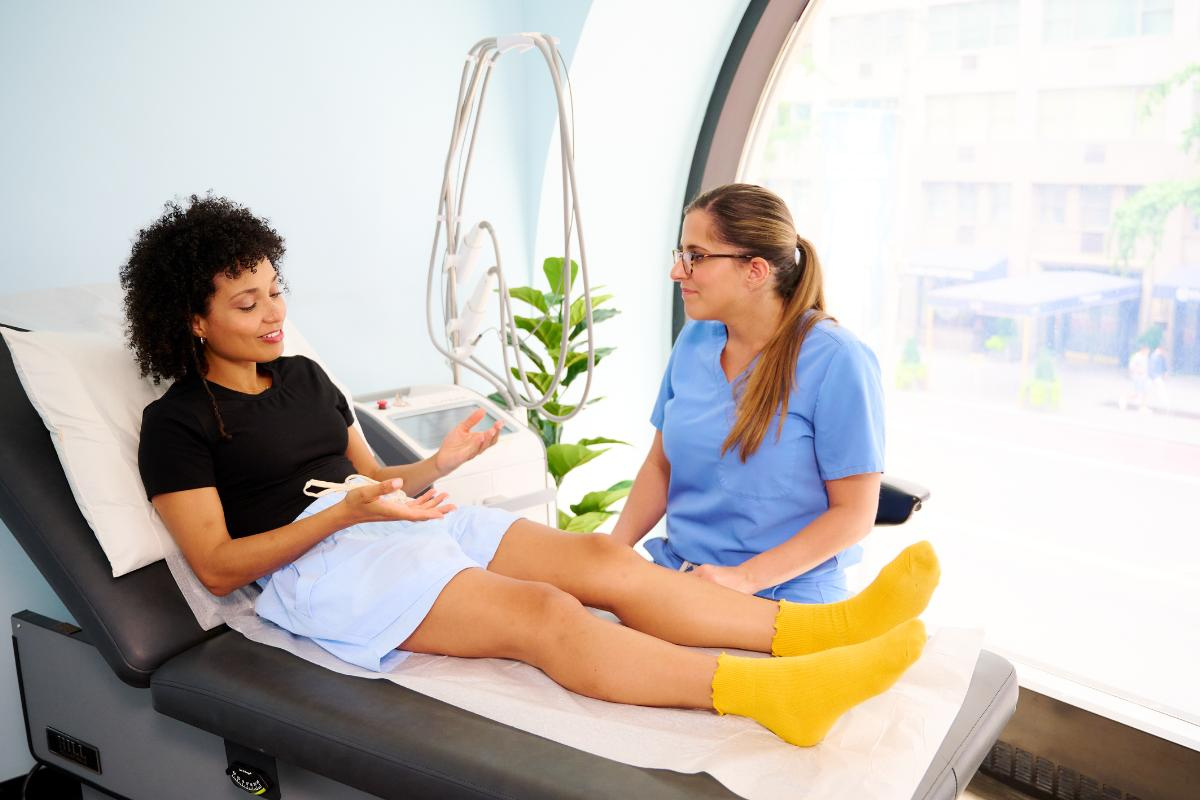
Why Does In-Network Care Matter for Vein Treatment?
An in-network doctor has a contract with your health insurance company, which can mean they have agreed on specific, lower costs for their services. Receiving care from an in-network provider like Metro Vein Centers can lead to lower vein treatment costs for you and ensure that all your payments count toward your deductible and out-of-pocket maximum. Care from an out-of-network provider typically results in higher costs for you and may not fully count toward your deductible.
Meeting Your Deductible
Now that you know the basics of insurance, let's look at which vein treatment costs count toward your deductible. Understanding this is key to getting the most out of your insurance coverage.
Which Vein Treatment Costs Apply to Your Deductible?
The following medically necessary vein-related costs generally apply to your deductible:
The costs that count toward your deductible are typically those considered medically necessary by your insurance provider. The following vein treatment costs generally apply to your deductible:
- Office visits and initial consultations with a vein specialist.
- Diagnostic ultrasounds when required to diagnose your condition.
- Compression stockings (sometimes, but not always covered by insurance).
- Medically-approved and necessary vein procedures, once approved by your insurance provider.

Do Cosmetic Vein Treatments Count Toward Your Deductible?
No, cosmetic vein treatments are not covered by insurance and therefore do not count toward your deductible. Some procedures for spider veins, like those performed for aesthetic reasons, are usually considered cosmetic and are not covered by health insurance. However, vein procedures for symptomatic spider veins and varicose veins are typically eligible for coverage.
Timing Your Vein Treatment
Timing can be a major factor in the cost of your vein care, especially if you're trying to save money on your out-of-pocket costs. Scheduling your treatment at the right time of year can help you get the most out of your health insurance benefits.
Why is the End of the Year the Best Time for Vein Treatment?
The months between fall and the end of the year can be an ideal time for vein treatment because most insurance deductibles reset on January 1st. If you have already met your deductible through other medical care earlier in the year, your vein treatment may require little to no out-of-pocket contributions from you. This allows you to maximize your health insurance benefits before they reset.
Scheduling vein treatment in the fall and winter months can have other benefits, too, like cooler temperatures and less sun exposure, which can aid in treatment recovery.

What Happens if You Delay Vein Treatment Until Next Year?
If you delay a medically necessary vein procedure until the new year, your deductible will reset to the full amount, and you will have to pay the full deductible again. Delaying treatment can also cause your symptoms to worsen over time, potentially leading to complications like increased pain, swelling, leg ulcers, or even more serious conditions like a DVT (deep vein thrombosis).
Your Deductible and Vein Treatment: A Step-by-Step Guide
Below is a step-by-step guide to managing your insurance deductible for vein treatment. Following these steps will help you navigate the process and maximize your insurance benefits.
How Can You Use Your Deductible for Vein Treatment?
You can use your deductible for vein treatment by following these steps:
1. Check your deductible status
Log in to your insurance portal or call your insurer to see how close you are to meeting your deductible and out-of-pocket maximum.
2. Book a consultation with a vein specialist
This diagnostic visit is typically covered by insurance, but your vein assessment is offered at no cost at Metro Vein Centers.
3. Schedule a vein ultrasound
A vein ultrasound is a non-invasive test that is often required by insurers to determine the severity of your vein disease and is a necessary step for coverage.
4. Confirm medical necessity with your insurer
Your vein specialist will submit documentation to your insurer for approval, demonstrating that your vein procedure is medically necessary based on your symptoms, vein assessment, and ultrasound results.
5. Book your procedure
Once you have insurance approval, schedule your vein procedure before your deductible resets at the end of the year.
6. Use HSA/FSA funds
An HSA is a tax-advantaged account that can be used to pay for qualified medical expenses. If you have funds in your Health Savings Account (HSA) or Flexible Spending Account (FSA), you can apply them toward any remaining balance.
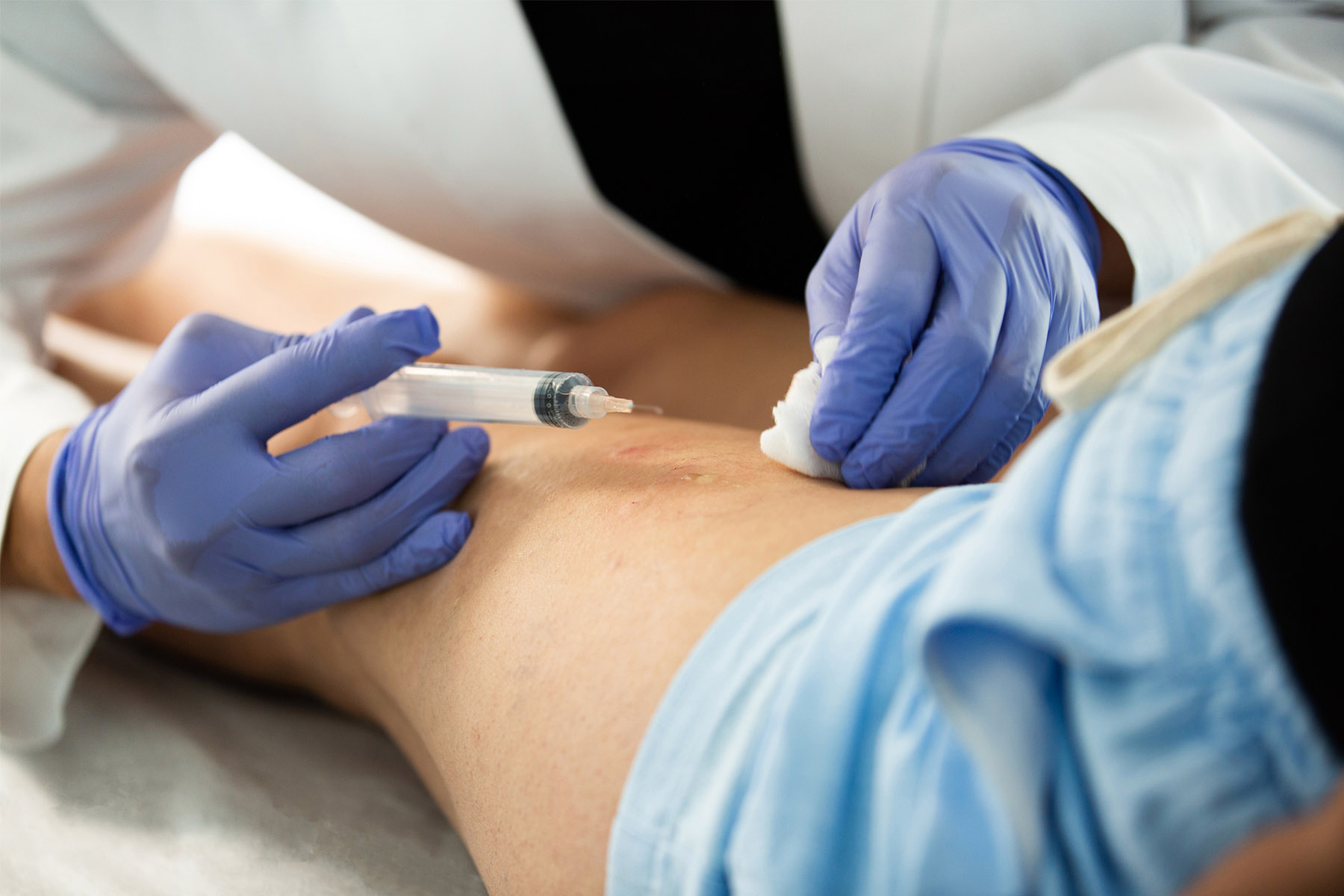
Coverage & Exclusions
Understanding what your insurance will and won't cover is another key part of the vein procedure coverage process. Here, we break down which common vein procedures are typically included in your plan and which are excluded.
What Vein Treatments are Typically Covered by Insurance?
Most major insurance plans cover medically necessary procedures to treat vein disease and conditions like varicose veins and chronic venous insufficiency. Metro Vein Centers accepts over 200 insurance plans, and in fact, over 97% of our vein treatments are covered by insurance.
Coverage typically covers procedures that alleviate symptoms like pain, swelling, and quality of life. The most common covered procedures include Endovenous Laser Treatment (EVLT or EVLA), Radiofrequency Ablation (RFA), and procedures using medical adhesives like Varithena or VenaSeal. Ambulatory phlebectomy, which removes veins through tiny incisions, is also often covered when performed to address the underlying vein disease.
What Vein Treatments are Usually NOT Covered by Insurance?
Vein treatments that are considered cosmetic and are not medically necessary are not usually covered by insurance. This includes cosmetic spider vein treatment, such as sclerotherapy and laser treatments for appearance improvement and not symptom reduction.
Frequently Asked Questions
What is a deductible, and how does it affect vein treatment?
A deductible is the amount you need to pay for your medical care before your insurance plan starts to cover a percentage of your costs. It affects vein treatment by determining how much you will pay out-of-pocket for medically necessary procedures before your insurance benefits kick in.
Does insurance cover varicose vein procedures once my deductible is met?
Yes, for medically necessary varicose vein procedures, insurance will typically begin to cover a significant portion, or even 100% of the cost, once you have met your annual deductible.
Are spider vein treatments covered by insurance?
No, spider vein treatments are not usually covered by insurance. Because they are considered a cosmetic concern and not a medical necessity, the cost for these procedures must be paid out-of-pocket.
Do I need a referral or an ultrasound before vein treatment coverage?
No, not usually. While many insurance plans (especially PPO plans) do not require a referral to see a vein specialist, an ultrasound is a mandatory first step. It is required by insurers to confirm a diagnosis of venous insufficiency and determine that the treatment is medically necessary for coverage. It's always best to check with your specific insurance plan to understand its referral requirements.
Can I use HSA or FSA funds to pay for vein care?
Yes, you can use funds from your Health Savings Account (HSA) or Flexible Spending Account (FSA) to pay for medically necessary vein treatments as well as your remaining out-of-pocket costs, such as your deductible or copay.
What happens if I don't meet my deductible before year-end?
If you do not meet your deductible by the end of the year, the remaining balance will not roll over. On January 1st, your deductible will reset, and you will have to pay for a new set of out-of-pocket costs before your insurance coverage begins for the new year.
What's the Bottom Line on Vein Insurance Deductibles?
Meeting your deductible can make a medically necessary vein procedure significantly more affordable for you, potentially reducing your out-of-pocket costs to zero. Scheduling your treatment at the end of the year is considered the best time to take advantage of the benefits you've already earned, if you have already met your insurance deductible or are close to doing so.
If you have questions about vein treatment and insurance, our insurance specialists can walk you through the insurance (and deductible) process, schedule you for a free vein evaluation, and answer any questions you may have.

Dr. Philip LoPresti
Meet Dr. Philip LoPresti DO, DABVLM, FACS, a board-certified vein specialist and surgeon with over 20 years of experience. Schedule an appointment with him in Queens, NY today.
Meet Dr. Philip LoPresti
Trusted insight from the nationally accredited, board-certified vein doctors at Metro Vein Centers.


